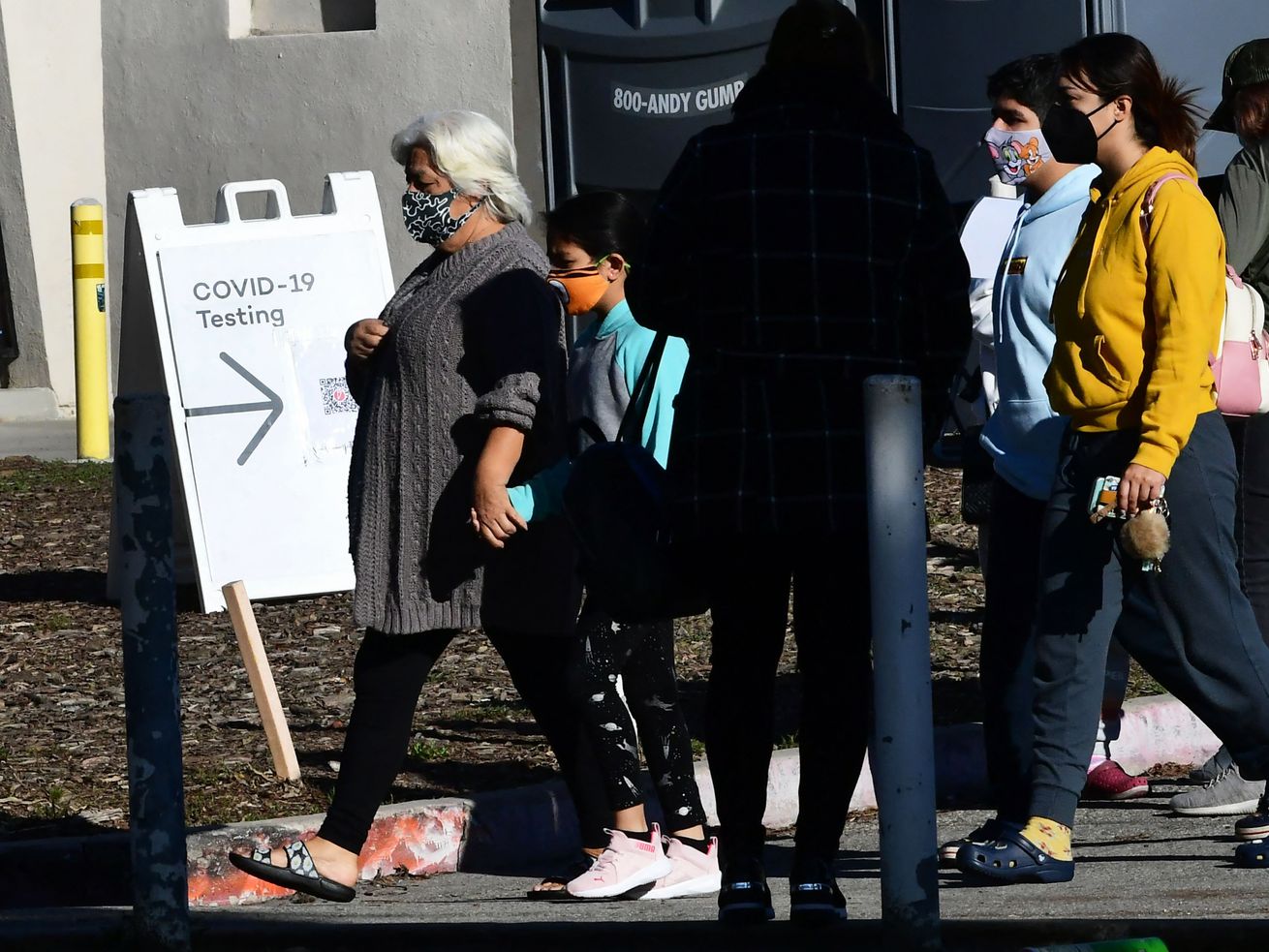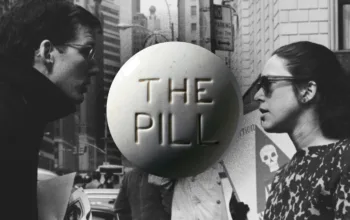How to handle quarantining, testing, and masking after a Covid-19 exposure.
If you find out you’ve been exposed to someone who’s tested positive for Covid-19, a rush of questions might come to mind: Do I have to quarantine? What if I can’t find a good mask or a test? Even if I test negative, can I be certain that I’m not contagious?
With omicron causing record-shattering case growth over the past few weeks, the Centers for Disease Control and Prevention’s (CDC) guidelines about what to do after exposure have shifted, and they remain frustratingly unclear. The last thing anyone wants to do when they’ve just learned they’ve been exposed is to dig through a bunch of confusing guidelines.
Yet we all need to know what to do in this situation. Even if you’re not worried about omicron’s effects on you personally — maybe because it appears to be milder, because you’re in a low-risk group, or because you think Covid-19 is inescapable at this point — it’s crucial to do all you reasonably can to avoid spreading it to others right now, especially anyone who might be elderly, immunocompromised, or unvaccinated. Testing capacity is currently very strained and some hospitals are already running out of staffing and beds. It’s really important that we not contribute to that crunch.
Experts aren’t suggesting Americans have to go back to a March 2020-style lockdown. Unlike at the start of the pandemic, we have vaccines and boosters that are highly effective at preventing serious illness and death. But they are advising people to be thoughtful about risk right now — both in terms of the precautions we take to avoid being exposed to omicron, and in terms of what we do if we have been exposed.
So, to get some clarity on what we should do in the immediate aftermath of an exposure, I asked three epidemiologists what they themselves would do. As you’ll see, there’s a spectrum of views here; within this spectrum, you can decide where you fall depending on your own risk calculus, the people you come in contact with, and the community spread in your area.
1) I just found out I’ve been exposed to someone who tested positive — what’s the first thing I should do?
There’s broad unanimity on this front. “Don’t run to get tested. And don’t panic,” said David Dowdy, an epidemiologist at the Johns Hopkins Bloomberg School of Public Health.
If you spent time indoors with someone and then find out they’ve tested positive, it’s possible you might get Covid-19 from the exposure, but you won’t test positive immediately after it. So if it’s only been a day or two since your exposure, the thing to focus on first is not testing, but the possibility of needing to quarantine — and the certainty of needing a good mask.
If you’re unvaccinated, or are vaccinated with two doses but not yet boosted, you should quarantine for five days and continue to wear a mask around others for five more days after that.
If you’re boosted, then you don’t need to quarantine, according to the CDC guidelines. But you should still wear a mask around others for 10 days after the exposure.
And yes, “wear a mask around others” includes others in your home — like children or roommates — if possible. Dowdy acknowledged that’s hard to do, but said his family did it when one of them recently had Covid-19: They opened the windows in the house, wore N95s, and slept in different rooms. “Not everyone will be able to do this,” he said, “but for those who can, it’s the ideal way to halt transmission.”
All that said, the CDC guidance has also led to other questions.
2) The CDC says I don’t need to quarantine if I’m vaccinated and boosted. Is that really sound guidance?
When I asked the epidemiologists whether they agreed with the CDC on this point, they expressed a range of opinion.
“I think this is a safe bet. Boosters prevent infection from omicron very well,” Katelyn Jetelina, an infectious diseases epidemiologist with the University of Texas Health Science Center at Houston, told me by email. In other words, if you’re boosted, the chance that you’ll spread the omicron variant is significantly lowered because there’s a lower chance of you becoming infected with it in the first place.
Dowdy, for his part, said of the CDC guidance, “I think this is reasonable, depending on the level of transmission in your area. If you’re in the midst of a hot spot, it probably makes sense to quarantine even if you are vaccinated. But if transmission levels are low, this is reasonable advice.”
He added that it’s important to consider a couple of other factors in making your personal decision: first, whether you frequently come into contact with other people who could get really sick if they got infected, and second, if it’s been more than a few months since your last vaccine dose. “In either of these cases, it makes sense to quarantine, even if you are vaccinated,” he said.
Tara Smith, an epidemiologist at Kent State University, told me she doesn’t think we have enough data about omicron to know if the CDC’s advice is solid. “If you can quarantine, I would still recommend it,” she said.
“We did when we had an exposure just before Christmas. We all ended up negative but did not want to take the chance of spreading virus, and were off work and school with the holiday so that was easy for us,” she said. “Understandably, not everyone can do that, especially as many employers will no longer allow such measures. That’s why it’s important to be diligent about masking.”
3) When should I take a test? What should I do if I have difficulty getting a test?
The best time to get tested seems to be about five days after exposure (or at any time after a fever develops). Just remember that tests — especially rapid antigen tests — are not foolproof. “Testing negative doesn’t mean you can go mask-free. You should still mask around others in public” until it’s been 10 days since the exposure, Smith said. “Even with a negative test, if you have exposure and symptoms, it’s best to assume you are Covid-positive and act as such.”
What about if you can’t get access to a test?
In that case, Dowdy said, “The best thing to do is continue quarantine for 10 days after any exposure. If you haven’t developed symptoms within 10 days, it’s reasonable to end quarantine at that time.”
With all of this, he said, there is a balance of risks and benefits — as well as personal circumstances — that must be assessed on an individual level. “What I’m describing is the ideal situation — for example, someone who can easily quarantine and continue working at home,” he said. “But most of us don’t live in those ideal situations, and it’s important for all of us to be understanding of others who may not have the same support systems that we have.”
Jetelina agrees that if you have difficulty getting a test, you should assume that you are positive and isolate until you can get your hands on one. “If you’re still asymptomatic after five days (and still can’t get a test), you can stop isolation as long as you can wear a good mask for five more days,” she wrote, noting N95s are the best option.
4) The CDC says I’m supposed to mask up for 10 days after exposure. Is that really necessary?
Both Jetelina and Smith were crystal-clear on this one: Yes!
“This is incredibly important as you can still be infectious after five days,” Jetelina said.
We’re still learning about the transmission dynamics of omicron, and although many people will probably stop being infectious before 10 days have passed, “wearing a mask during that period will help to reduce any chance of spreading the virus,” Smith explained.
Dowdy noted that compared to other measures that could be enacted (like lockdowns), wearing a mask in public places is arguably not the hardest thing to do. So wearing a mask for 10 days is “the ideal,” he said, though he reemphasized the caveat that “we have to be understanding of people for whom this might not be possible.”
5) What kind of mask should I wear? What should I do if I can’t get an N95?
The best bet is an N95. KN95 masks work great, too.
Even though these masks are in high demand right now, you can still order them from mass suppliers like Walmart or Amazon, or from retailers like WellBefore, Bona Fide Masks, DemeTECH, and N95 Mask Co. (There may be a shipping lag for some of these masks, so even if you haven’t been exposed, it’s a good idea to stock up now so you’ll be prepared.)
“Remember that the fit of the mask is just as important as the type of mask,” Dowdy said. “Wearing an N95 without fitting it to your face is defeating the purpose of wearing an N95 in the first place.”
If you can’t get an N95 or a KN95, the next-best option is a tight-fitting surgical mask (see this CDC video on how to adjust a surgical mask to improve fit). Adding a cloth mask on top of your surgical mask will further help eliminate gaps around your face.
If you’ve been exposed or tested positive, do not rely on a cloth mask alone to prevent you from spreading the virus to others.
6) If I get a negative rapid test result, can I trust the result enough to go see, say, my elderly parents?
It’s important to remember that rapid tests aren’t perfect — and even with more sensitive tests like PCR, being negative one day doesn’t mean you won’t be positive in another day or two.
“If you have symptoms or a close contact [with an infected person], I would not trust one negative test,” Jetelina said, adding that it’s a good idea to retest at least 24 hours later.
Likewise, Smith said, “I would still try to mask around others if you have been exposed, when possible, especially if individuals you may spend time with are in high-risk categories.”
She noted that there have been some reports recently that sampling the nose isn’t sensitive enough early on to detect omicron infection, and that samples from the throat or saliva may detect it earlier. (Note that these reports are not yet peer-reviewed.) However, we don’t yet know if those early throat or saliva samples mean infected individuals are already spreading virus to others.
According to Dowdy, it’s “really a judgment call at this point” whether you should feel comfortable visiting parents after one negative rapid test result. You have to consider your level of exposure, your parents’ health, how long and in what setting you’ll be seeing each other, and how both you and your parents weigh the value of seeing each other against the risk of them getting sick.
“If your parents are relatively healthy and you haven’t been closely exposed (and are feeling well), it’s probably reasonable to trust that negative test result,” he said. “If your parents are much more frail and you’re living with someone who has Covid in your house, I’d wait.”
Author: Sigal Samuel
Read More



